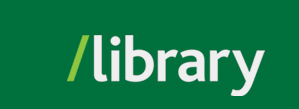
The diagram below shows you that writing a paper is not a simple linear process.
There are various aspects that will affect what you look for and what you find. Half way through doing your paper, you might find something that really changes your perspective on the topic and how you want to write about it. So make sure you give yourself enough time for this.

Big Picture
|
Situational
|
Language
|
Information Gathering
|
Adapted from: Head, A. J., & Eisenberg, M. B. (2009). Finding context: What today's college students say about conducting research in the digital age. Retrieved from https://www.projectinfolit.org/publications.html
First of all you need to think about what interests you and then brainstorm some ideas. One technique you can use is called concept mapping or mind mapping.
Here are a couple of examples:


How to Choose Keywords
Now take a look at your concept map. If you try to do a presentation about the subject in the middle you will probably be talking for a very, very, long time.
You need to look at the ideas as the side and see which one you like the most.
So I can't write about social media because it is too big a topic. I noticed that I am really interested in the addiction to it, so I am going to focus on that. Social Media addiction is a narrower topic of social media.
Addiction is still quite a big topic but I am going to think about how I can limit social media addiction in my community which makes my topic even narrower. Maybe even too narrow but you need to start somewhere!
Take a look at this video from Las Positas College Library to see how they develop their ideas.

Using our Find It box on the library homepage, you will get access to many different types of resources.
[Note: We are working to improve access to our collections and revising our subject headings to be more respectful and inclusive. Please be aware that you may see certain words or descriptions in search results or library materials which reflect the author’s attitude or that of the period in which the item was created and may now be considered offensive.]
Your results will look something like this:

Use the Share option to email/print/ save yourself the article. You might have to click on the three dots or tools to see the Share icon.
You can also see a citation if you press the Cite button. Always double check the citation is correct though!

Other limits or filters that are available:
Use Geography to limit to Canada (including provinces and cities)
Use Subjects or Subject: Major Heading to find more specific topic areas
Use Content Provider if you only want medical articles (Medline or CINAHL) or psychology articles (PsycINFO)
Once you have selected your filters, don't forget to hit apply. Remeber also to clear all, if you don't like the limits you have applied.

Finding Scholarly Articles with Find It
Choosing an Article
Take a look at these three resources. What clues do you look for to identify an academic article?
To check your answers look here:
With so many ebooks available out there, often you think you are looking at a journal article when actually you are looking at a book chapter.
In your memo you are asked to use non-academic lanugage, so you are aware that authors write for different audiences. They may be presenting the same idea to two groups of people but they choose to present that idea using different methods. You will therefore start to notice that journal articles are written with the assumption that you already know about the topic. Therefore you will find the language hard to understand if you are not already familiar with the subject area. Books are usually written with the assumption that you don't know anything about the topic and that you are reading them because you need an introduction. So when you put a chapter beside a journal article you will probably find that the chapter is much easier to understand.
Take a look a the links below and ask yourself. Is it a book chapter or an article?
Although librarians have carefully compiled these sources, there is no substitute for your own evaluation. Use the following guides to help you.
To avoid searching through endless unreliable websites, improve your google searches from the start.
Use these as part of your search:
site:.edu (to search only U.S. universities), e.g. "social media" influences site:.edu
site:.ac.uk (to search only UK Universities), e.g "artificial intelligence" education site:.ac.uk
site:.gov (to search the US gov website.)
site:.gc.ca OR site:.canada.ca (to search the Canadian gov website.)
site:.org (to search organizations)
Also include words like disseration, thesis, or pdf to bring up more reliable documents.
Try earnings education pdf site:.canada.ca or "social media" pdf site:.gc.ca or inspirational quotes about education site:edu
© , University of the Fraser Valley, 33844 King Road, Abbotsford, B.C., Canada V2S 7M8

